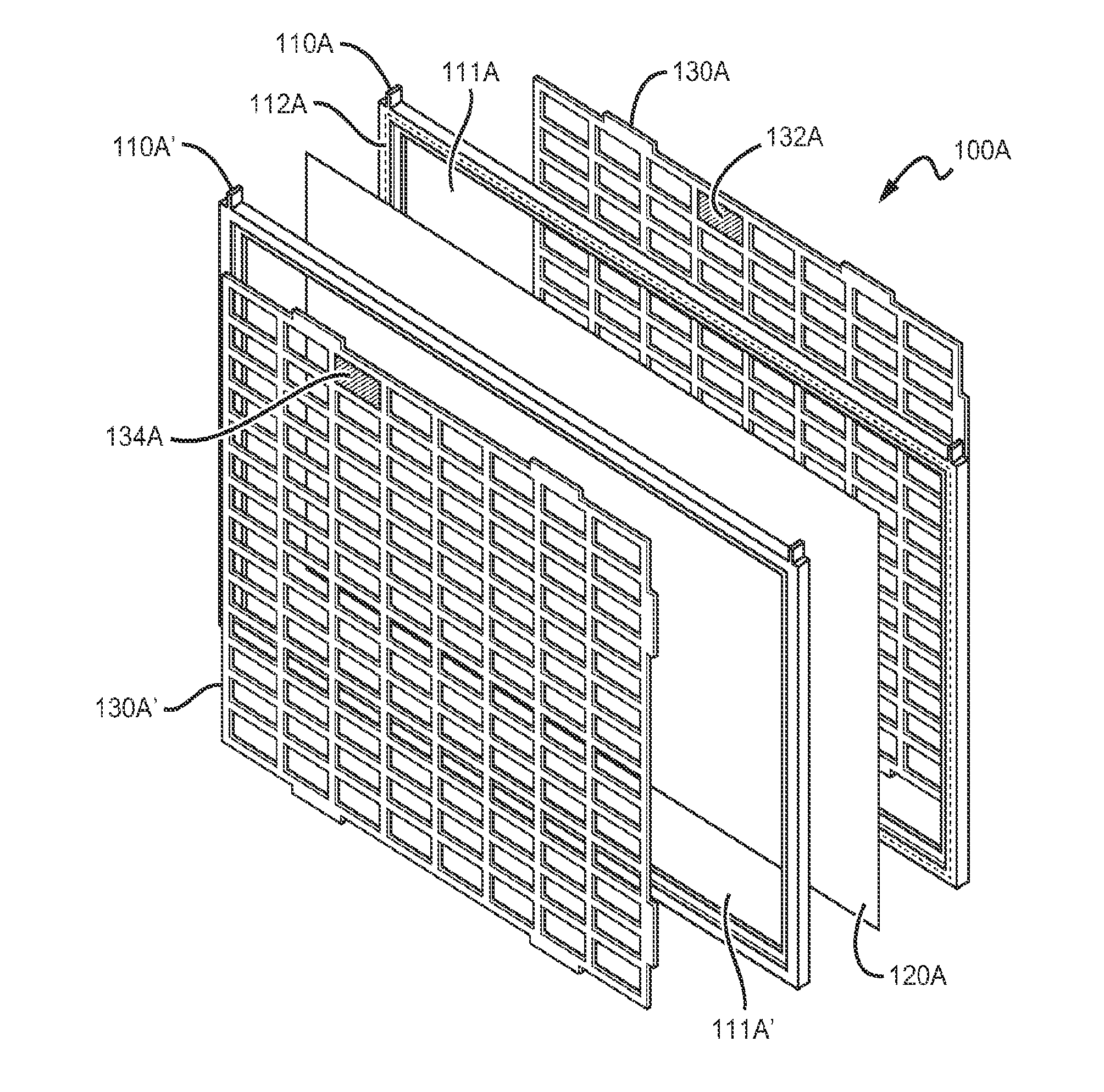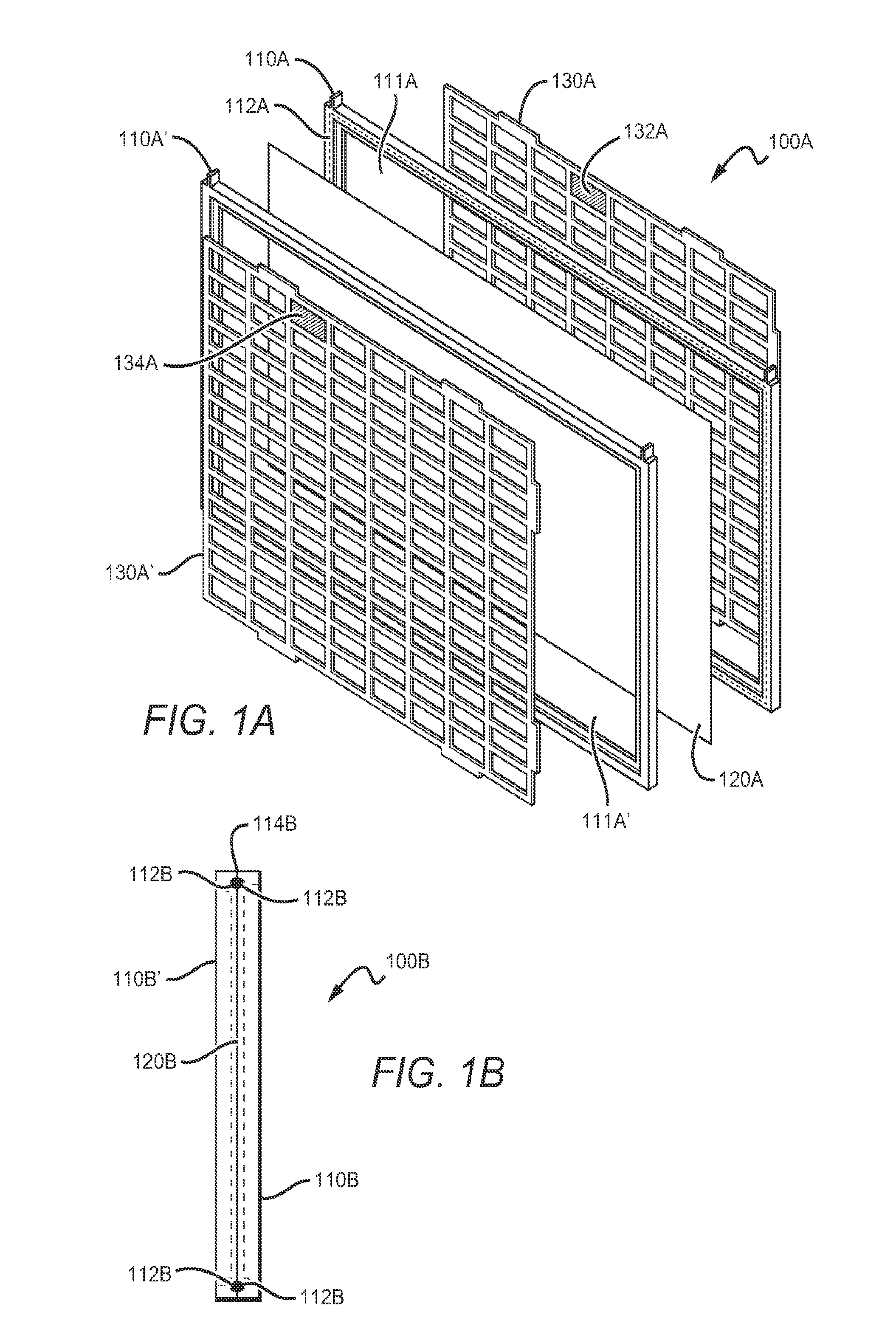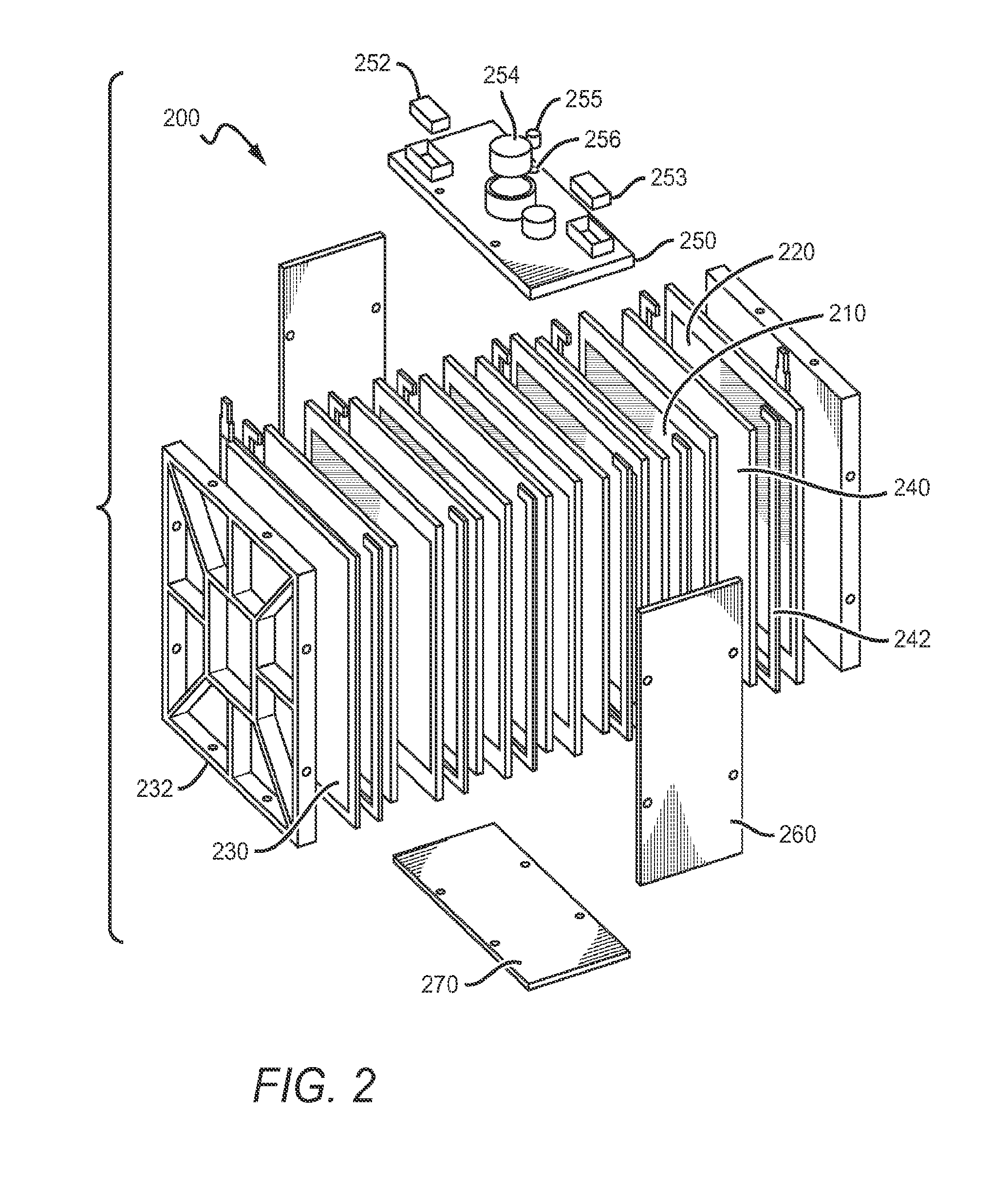Light-weight bipolar valve regulated lead acid batteries and methods therefor
a bipolar, valve-regulated technology, applied in the direction of secondary cell servicing/maintenance, cell components, sustainable manufacturing/processing, etc., can solve the problems of premature capacity loss of batteries, affecting the stability of battery structure, and requiring relatively lame quantities of metallic lead to retain structural stability, etc., to achieve simple manufacturing, reduce weight, and increase specific energy
- Summary
- Abstract
- Description
- Claims
- Application Information
AI Technical Summary
Benefits of technology
Problems solved by technology
Method used
Image
Examples
Embodiment Construction
[0024]The inventor has discovered that bipolar batteries, and especially VRLAs with high power densities can be produced in a simple and cost-effective process that will significantly reduce use of metallic weight and substantially eliminates electrolyte creep and / or loss. In especially preferred aspects, the substrate of a bipolar electrode assembly is made from a very thin lead (alloy) foil, while the grid / current collectors are replaced by a phantom grid (e.g., a grid made from a non-conductive polymeric material, or a ultra-thin lead grid that preferably has a thickness just sufficient to allow in-container formation without providing corrosion reserve for use during charge / discharge cycles). Thus, use of metallic lead is substantially reduced, typically up to 65% as compared to known VRLA bipolar electrode assemblies.
[0025]Moreover, electrolyte creep and / or loss is preferably avoided by laser welding of the frames to provide a tight and durable seal between the frame elements. ...
PUM
| Property | Measurement | Unit |
|---|---|---|
| thickness | aaaaa | aaaaa |
| weight ratio | aaaaa | aaaaa |
| specific energy | aaaaa | aaaaa |
Abstract
Description
Claims
Application Information
 Login to View More
Login to View More - R&D
- Intellectual Property
- Life Sciences
- Materials
- Tech Scout
- Unparalleled Data Quality
- Higher Quality Content
- 60% Fewer Hallucinations
Browse by: Latest US Patents, China's latest patents, Technical Efficacy Thesaurus, Application Domain, Technology Topic, Popular Technical Reports.
© 2025 PatSnap. All rights reserved.Legal|Privacy policy|Modern Slavery Act Transparency Statement|Sitemap|About US| Contact US: help@patsnap.com



